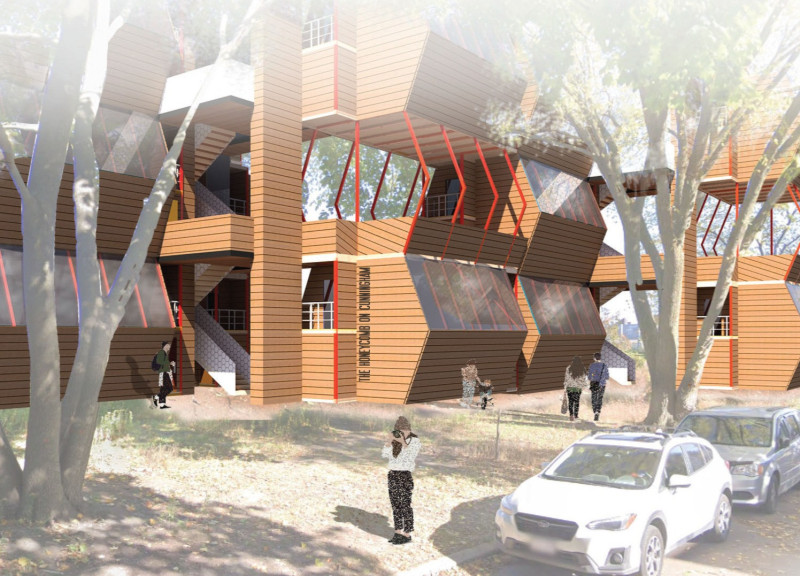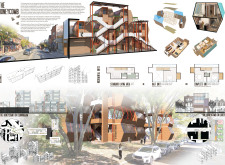5 key facts about this project
At its core, "The Honeycomb" is designed to serve as a multi-family living space that promotes interaction and adaptability. The concept draws inspiration from the natural form of a honeycomb, emphasizing the efficiency and interconnectedness of each residential unit. By utilizing a hexagonal design, the project optimizes land use, allowing for a greater number of units to coexist within a compact footprint. This not only addresses the pressing need for housing but also challenges conventional architectural practices that often prioritize individualism over community.
Functionally, each living space within "The Honeycomb" is meticulously designed to ensure that residents enjoy both privacy and opportunities for social interaction. The modular units accommodate varying sizes and configurations, catering to different family dynamics and financial circumstances. Smaller units are designed for individuals or couples, while larger configurations can be adapted for families. This versatility is further enhanced with communal areas integrated throughout the structure, facilitating casual encounters and shared experiences among residents.
Architectural details play a crucial role in the efficacy and appeal of the design. The use of natural materials, such as wood and metal, reflects a commitment to sustainability while contributing to a warm aesthetic that invites residents to personalize their spaces. Large glass panels are strategically placed to orient living areas towards natural light, enhancing the overall living experience by connecting residents to their environment. The transparency provided by glass not only serves a functional purpose but also symbolizes openness and community, breaking down barriers often found in traditional apartment layouts.
Unique design approaches are evident throughout "The Honeycomb." The incorporation of green spaces, including shared terraces and balconies, allows residents to engage with nature, promoting well-being and enhancing the building’s livability. Vertical circulation is thoughtfully integrated into the design, featuring a blend of stairs and possibly even lifts to connect different levels while maintaining a fluid circulation path throughout the building. This design encourages not only practical movement but also interaction, as residents pass through shared spaces that invite communication and community engagement.
Moreover, the architectural layout promotes a sense of exploration, as residents navigate various communal and private zones within the structure. The honeycomb pattern not only optimizes space but also cultivates a distinct identity for the building, setting it apart from more traditional housing developments. This identity reinforces the notion of community by creating a residence that is both recognizable and functionally supportive of its inhabitants.
As an architectural project, "The Honeycomb" encapsulates a holistic approach to urban living, combining thoughtful design with a commitment to sustainability and community well-being. It stands as a significant example of how architecture can address pressing housing challenges, offering adaptable solutions that respect the needs and preferences of its residents.
For those interested in a deeper exploration of this project, examining the architectural plans, sections, and design ideas will provide further insights into its thoughtful approach and execution. Engaging with these elements will allow readers and potential stakeholders to appreciate the complexities and thoughtful intricacies embedded within "The Honeycomb," showcasing its role as a meaningful contribution to the architectural landscape.























